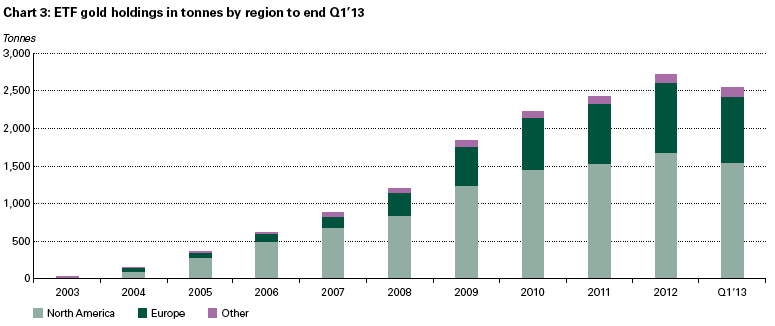[ad_1]
It’s been a lousy year for gold. Prices are down more than 8% so far in 2018, after falling below $1,200/oz for the first time in a year earlier this month.
With U.S. stocks back near record highs, the dollar climbing and interest rates globally biased upward, there’s been little reason for investors to park their money in the safe-haven metal. At the same time, demand for physical gold has been tepid at best, according to the latest figures from the World Gold Council.
Gold purchases during the first half of 2018 were at their lowest level since 2009, while gold mine production soared to an all-time high, notes the WGC’s latest Demand Trends Report—a bearish combination for prices.
Spot Gold Price

13-Week Losing Streak
With all these head winds, investors have had little interest in buying gold recently. Bloomberg reported that gold-tracking ETFs, such as the $29 billion SPDR Gold Trust (GLD), the $10 billion iShares Gold Trust (IAU) and others, shed assets for 13 weeks in a row, the longest streak in five years.
The outflows haven’t been especially large—ETFs hold 4 million fewer ounces of gold than they did three months ago—a reduction of 5.5%. But the streak highlights the general listlessness surrounding gold right now, with little reason for investors to get involved.
For the year as a whole, holdings are down about 0.5%, with outflows from U.S. gold ETFs and inflows for European gold ETFs.
Decline Drivers
The lack of demand for gold ETFs may be one of the main reasons prices are sinking in 2018.
“Gold fundamentals, especially on the demand side, have been weak for several years. I don’t think that’s been the key driver for the weakness in gold prices that we’ve seen so far this year,” said Maxwell Gold, director of investment strategy for ETF Securities by Aberdeen Standard Investments.
Rather, “the outflows from gold ETFs are a larger driver of gold in the short term,” he said. “In addition, there’s been an increase of short positioning of speculators in futures markets, which has been a big head wind.”
Overextended Short Trade
Maxwell doesn’t see these bearish factors holding down gold going forward. He noted that short positions in the gold futures market are at record levels, “an overextended trade,” in his view. If gold prices stabilize, that could spark a short covering rally, he notes.
He’s also encouraged by the fact that gold prices remain above their lowest levels of this cycle. Since peaking in 2011, gold bottomed out in December 2015 at around $1,050/oz, more than 12% below current levels.
Maxwell anticipates that the low will hold and that gold will eventually recover as investors begin to appreciate gold’s role as a hedge against budding inflation risks.
“Gold has the benefit of being sensitive towards very strong inflationary and deflationary pressures,” Maxwell explained. “We’re seeing inflation and inflation expectations pick up. With growing inflationary pressures, that will begin to weigh on the dollar.”
“Right now is a very attractive time from a strategic standpoint for investors to build up their gold allocations if they are underweight or hold zero gold,” he said, while adding that his base-case forecast is for gold to end the year between $1,250 and $1,275.
The Flip Side
Of course, not everyone believes gold is done going down. The countless speculators who are short gold in the futures market certainly don’t think so.
According to Marcus Garvey, commodity strategist at ICBC Standard Bank, as long as U.S. stocks and the U.S. dollar keep rising, that will keep pressure on gold.
“The move in gold is really a function of [dollar] strength,” he told Kitco. “It has periodically outperformed on a cross-currency basis, but by and large, gold has been driven down by the dollar’s broad-based rally and, particularly, the move against emerging market currencies.”
For gold to start outperforming on a relative basis, it would likely require [developed-market] equities and the dollar to sell off, Garvey concludes.
Dennis Gartman, publisher of The Gartman Letter, says gold’s problems run even deeper. He thinks that the new investing generation—millennials—“just doesn’t care” about gold and is more interested in novel investments like cryptocurrencies, which is driving demand away from the venerable metal.
In his view, this demand problem must be fixed before gold prices have any chance to sustainably recover.
Email Sumit Roy at [email protected] or follow him on Twitter sumitroy2
[ad_2]
Source link

